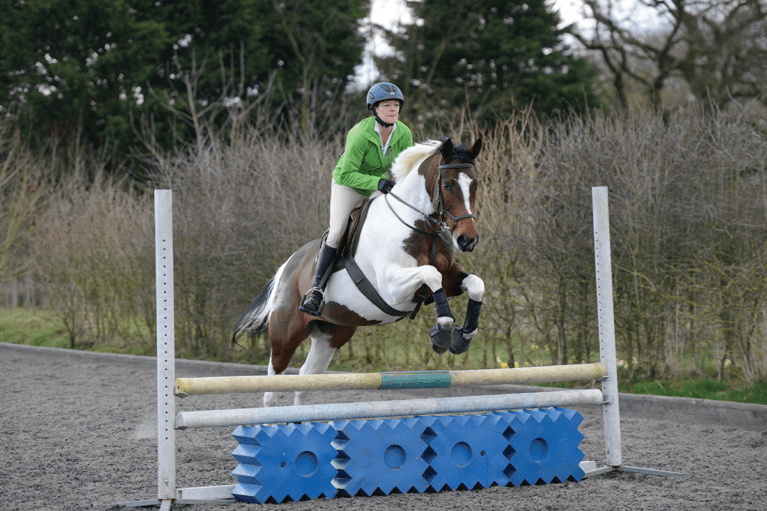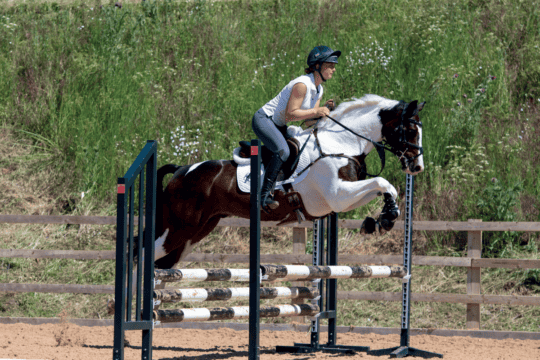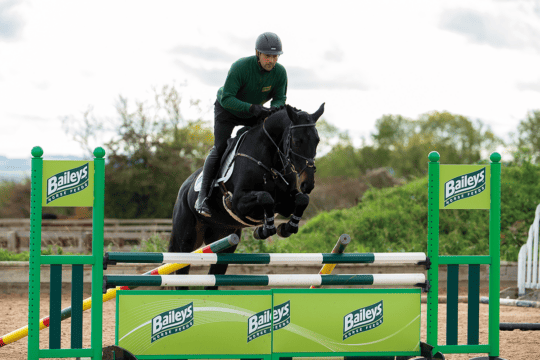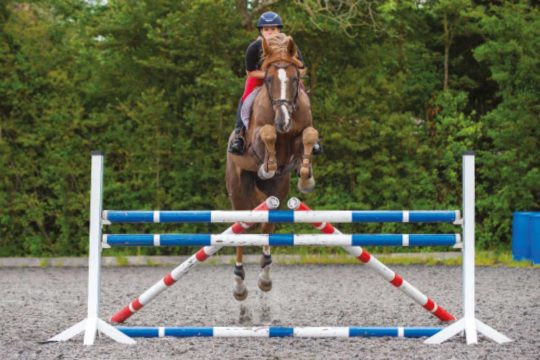-
Riding Schooling and Training
-
Health and Veterinary
-
Management
-
Mind Matters
-
Buying and Selling
-
Insurance Advice
FAQs
Badminton winner Sam Griffiths explains how to develop balance and straightness when jumping

Badminton winner Sam Griffiths explains how to develop balance and straightness when jumping
The quality of your horse’s canter and your ability to stay in balance with him are crucial to achieving that all-important clear round. When you watch top riders jump, you’ll see many different styles. From the forward American seat, where the rider remains out of the saddle between fences, to the more upright and military German style, which encourages a deeper seat until the horse takes off, and the multitude of variants in-between, it’s hard to know what’s the best option for you, but it’s important to keep in mind that the basics must remain consistent. Whatever position a top rider adopts, the common theme is that they don’t change their balance in front of a fence. This, more than anything else, is what you need to focus on. Your balance is intrinsically tied into your horse’s balance, but it can be tempting to ignore this and focus on adjusting his canter, when actually it’s probably your position that’s affecting his way of going.
Exercise 1
Trot through two poles, placed three strides (approximately 14m or 15 paces) apart. Next, canter through them. Focus on maintaining an even rhythm, staying relaxed and in balance with your horse. Finally, raise the second pole into a small jump, but don’t change the way you ride the exercise.
This exercise makes you think about your own centre of gravity, from working over poles through to jumping a single fence. It’s easy to anticipate a jump or push for a stride, but this causes you to bring your shoulders forward, which interrupts the flow of the fence and causes your horse to adjust his balance and striding, resulting in an awkward jump. By riding this exercise and staying conscious of not changing your approach once the poles have become a fence, you’ll learn to wait for the jump and the stride to come to you. This has the knock-on effect of encouraging your horse to wait and maintain a rhythm on the approach to a fence.
For more of Sam’s top tips and exercises to help you improve your jumping, get your copy of January Horse&Rider here, on sale 17 November.















